|
The Woodland Education Centre |
|
|
The Woodland Education Centre |
|
Ecological Survey 2001
Spring, Summer & Autumn Cut (Section 6)
These descriptions
build upon the descriptions of the sections given in the 2000 ecological survey and should
be read in conjunction for maximum benefit. |
Observations 2000 - 2001
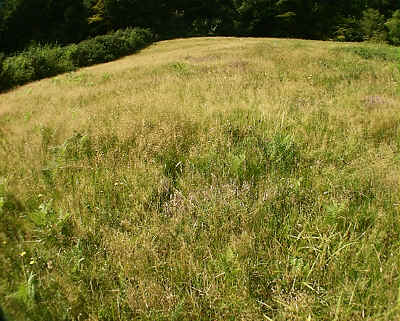 |
Section 6 continued to be a very diverse wild flower meadow, containing a number of dense clumps of Heather and a little Bell Heather. |
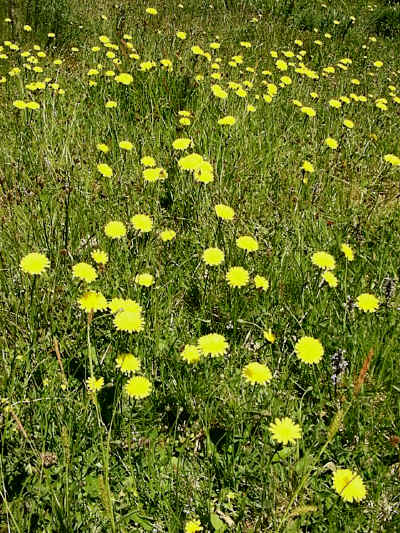 |
There were
few overall changes in the composition of the vegetation of the section from the preceding
year. Cat's-ear (left) maintained a similar abundance and continued to be a dominant species. It was intermingled with much lesser quantities of Autumn Hawkbit. |
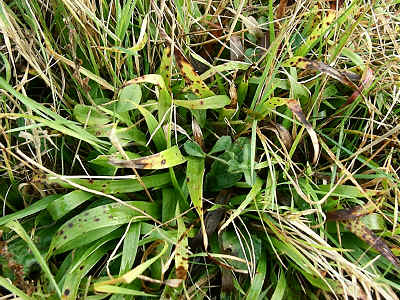 |
Woodrushes (left) continued to be an important component, occurring in over half of the quadrats sampled. |
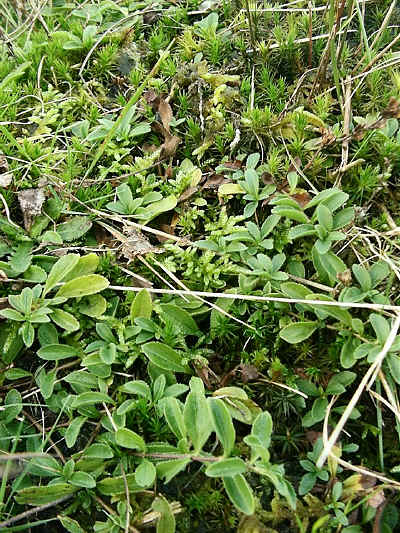 |
Heath
Speedwell (oval leaves, left
foreground)
increased in abundance for the second consecutive year. It was now found in 75% of all
quadrats sampled, covering almost 20% of the area.. The moss, Polytrichum formosum, (visible in the back right-hand corner) had declined over the year. |
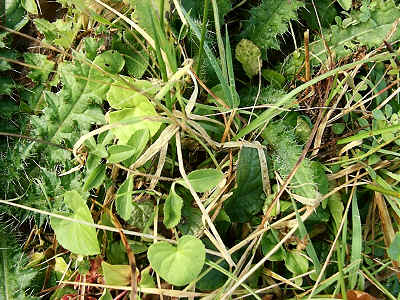 |
The sward in
this section was a highly diverse tangled mass of different species. The very small section pictured (left) covered an area of no more than a few inches square. This tiny representative patch contains at least 8 discernible species (Marsh Thistle, Yorkshire Fog, violet, Heath Speedwell, woodrushes, Bugle, Yellow Pimpernel and Slender St. John's-wort). |
Dominant Plants in
Section 6 in 2001
with figures from 2000 for comparison.
Characteristic heath species are in bold print
| Species | Overall % frequency | Mean % Cover (all quadrats) | ||
| 2001 | 2000 | 2001 | 2000 | |
| Common Bent | 100 | 81 | 36 | 29 |
| Yorkshire Fog | 97 | 90 | 14 | 19 |
| Eurhynchium praelongum | 94 | 81 | 41 | 33 |
| Common Dog-violet | 94 | 78 | 13 | 14 |
| Heath Speedwell | 75 | 49 | 18 | 10 |
| Bugle | 64 | 61 | 10 | 14 |
| Field Woodrush | 54 | 42 | 8 | 4 |
| Slender St John's-wort | 52 | 27 | 6 | 2 |
| Greater Bird's-foot Trefoil | 49 | 55 | 9 | 14 |
| Cat's-ear | 45 | 49 | 5 | 6 |
| Thuidium tamarascinum | 43 | 49 | 7 | 21 |
| Marsh Thistle | 42 | 48 | 4 | 13 |
| Polytrichum formosum | 29 | 49 | 15 | 28 |
| Wood Sage | 29 | 16 | 1 | 1 |
| Green-ribbed Sedge | 27 | 23 | 3 | 5 |
| European Gorse | 27 | 20 | 4 | 2 |
| Pill Sedge | 27 | 20 | 2 | 2 |
| Velvet Bent | 23 | 35 | 7 | 10 |
| Smooth-stalked Sedge | 23 | 23 | 3 | 3 |
| Heather | 17 | 14 | 7 | 3 |
| Percentage frequency = the percentage of the total number of quadrats sampled over the whole site which contain the species. For example, a percentage frequency of 100%, means that the species was found in all quadrats sampled. |
>> Continue to Hand weeded Section
Ecological Survey 2001 |